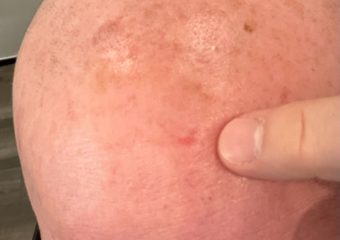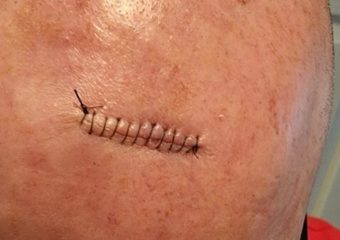Photo: Getty Images
A skin cancer diagnosis gives an expert investigator new skills for early detection. #ThisIsSkinCancer
Retired NYPD detective Ron Licciardi thought he’d seen it all. The 9/11 first-responder spent more than 20 years solving all kinds of cases by looking for clues and carefully examining evidence. But when it came to his own skin, he learned a hard lesson about how to identify skin cancer warning signs hiding in plain sight.
Four Skin Cancers in Three Years
When he retired from the police force, Ron never imagined he would gain expertise in looking for skin cancer clues. But from 2019 to 2023, Ron developed skin cancer five times. His first two were basal cell carcinomas (BCCs) followed by two squamous cell carcinomas (SCCs) and in 2023, another BCC.
It all started in early 2019, when Ron’s wife pointed out a new spot on his nose, and one on his shoulder that was changing size and color. “She said to me, ‘You know, you need to get these checked.’”
Important Clues: New, Changing, Unusual
Ron was not concerned. “Skin cancer never crossed my mind,” he explained. “Thanks to my wife’s persistence, I got checked by a dermatologist, who informed me that seeing something new, changing or unusual on your skin are important clues that you can’t overlook.”
A short time after his skin exam, Ron’s phone rang. “It was my dermatologist, who told me that both biopsies came back as skin cancers,” he said. “My heart sank when I heard the ‘C’ word. I researched online. It was encouraging to learn that basal cell carcinoma is very curable when caught early.”
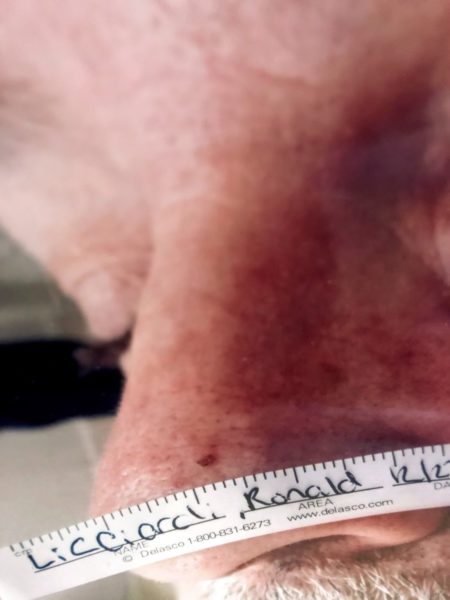 |
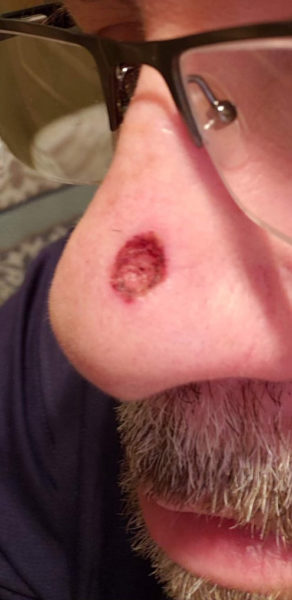 |
|---|---|
| BCC before surgery | BCC after surgery |
Photos: Ron Licciardi, DutyRon.com
Ron was treated with Mohs surgery for the BCC on his nose and electrosurgery to remove the one on his shoulder. “The Mohs is a precision kind of surgery, and luckily it only took one round to get the entire thing. The cancer started out as small as a freckle and I ended up with a wound larger than a pencil eraser. I’m lucky I did not wait. If it grew any bigger, who knows what the scar would look like!”
A Lifetime of Sun Exposure
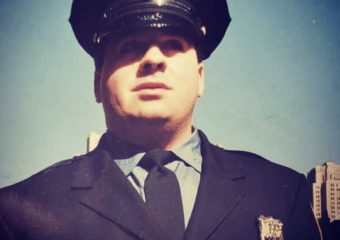
Ron’s hat did not protect his nose from the sun.
Like many people growing up on Long Island in the 1970s, Ron did not use much sunscreen. “I went to the beach and played outdoor sports all summer long without protecting my skin,” he explained. “Sunscreen was not widely used, and I never really thought twice about getting sunburned.”
In the 1990s, Ron entered the NYPD, got married and started a family. All the while, his sun exposure continued – working cases, coaching his son’s baseball games and going on tropical vacations. Even though the correlation between sun exposure and skin cancer was more publicly understood, Ron explained that sun protection was “not top of mind” during this busy time in his life.
From “Lackadaisical” to “Locked In”
While women are more vigilant than men about skin care and safety, new research suggests that couples can work together improve their sun protection habits. Ron admitted that over the decades, his wife did most of the sunburn prevention work. She brought the sunscreen and reminded him to reapply.
“Sometimes I would reapply and sometimes I wouldn’t,” he said. “You could say I was a little lackadaisical about it.”
Since his diagnosis, Ron changed his ways. “Right off the bat at age 54, I had more than one skin cancer. And there’s a family history of skin cancer – my older brother and sister have also been diagnosed with it. So now I’m locked in when it comes to protecting myself,” he explained.
SCCs on the Scalp
Ron knows that a history of two or more skin cancers puts him at a much higher risk of developing further skin cancers. In October 2021, he noticed something new on his scalp – a scaly lesion that occasionally bled. He immediately went to see his dermatologist. This time, Ron had squamous cell carcinoma (SCC). While the majority of these can be successfully treated, if left to grow, SCCs can become invasive, penetrate deeper layers of skin and spread to other parts of the body.
Ron had Mohs surgery, the most effective technique for treating SCCs. Mohs is often recommended for SCCs located in cosmetically or functionally important areas, including the scalp. The procedure is done in stages while the patient waits. After removing a layer of tissue, the surgeon examines it under a microscope in an on-site lab. If any cancer cells remain, the surgeon removes another layer from that precise location, sparing as much healthy tissue as possible. This process is repeated until no cancer cells remain.
After two layers were removed, Ron’s scalp was clear of cancer cells. “I’m glad I got it checked out and grateful to have the surgery right away,” he explained.
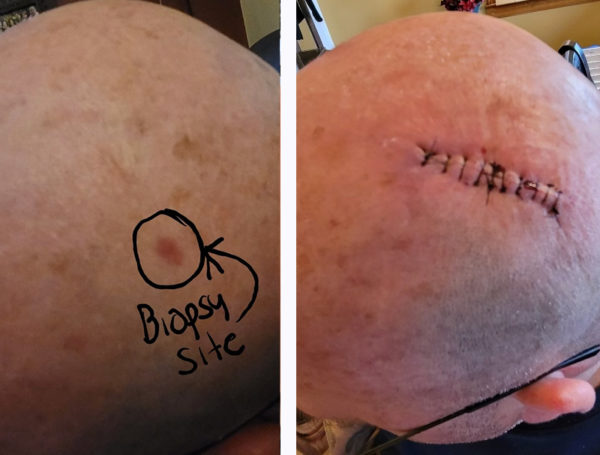
SCC removed in 2021 with Mohs surgery.
In March, 2022, Ron’s wife noticed yet another new spot on his scalp near his forehead. Once again, Ron headed to the dermatologist for a biopsy. He was diagnosed with his second scalp SCC and set up his third Mohs surgery. This time around, his surgeon removed just one layer of skin to achieve clean margins. In 2023, he had a BCC removed from his back with excisional surgery.
- SCC on the forehead, diagnosed in March 2022.
- After Mohs surgery. Photo: DutyRon.com
You Can See it, So You Can Do Something About It
Having five skin cancers in four years has made a profound impression on Ron. “Never again will I go outside without a hat. Now I take extreme precautions – umbrellas, wide-brimmed hats, sun protective clothing, and of course diligent sunscreen use,” he said.
These days, Ron performs monthly self exams to look for anything new, changing or unusual on his skin. He asks his wife to check the hard-to-see places. “My doctor educated me about what to look for, especially when checking my scalp, my arm tattoos and other places where skin cancers can hide.” Twice a year, he sees his dermatologist for a skin cancer screening.
Now that his investigative skills include skin cancer detection, Ron shares his story and his knowledge with his large YouTube and Instagram following. “Here’s a PSA for you, and a constant reminder: The sun is not your friend. Skin cancer is serious. It’s also the most common cancer in the world, but unlike other cancers, you can see it, so you can do something about it. I implore everyone: check your skin and protect it from the sun. Get yourself examined professionally once a year. It could make the difference between life and death.”



